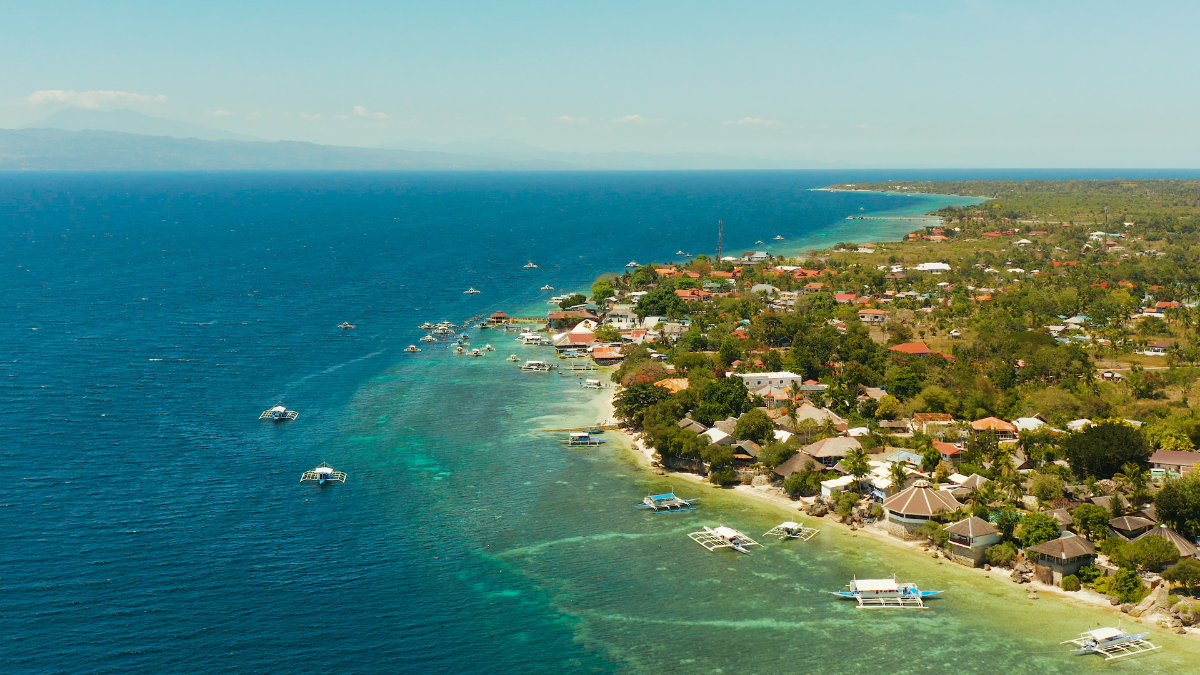Do you want to learn how to become a digital nomad in the Philippines because you want to travel while working? Read on to find out more about this trend.
What is a Digital Nomad?
Digital nomad conjures up images of a life of freedom and adventure. It sounds like a job where one can work remotely from anywhere in the world while visiting exotic places and checking off countries on one’s travel bucket list.
However, social media might have romanticized the digital nomad lifestyle. The term digital nomad refers to more of a way of life than an occupation, and it’s becoming increasingly popular due to a shift in the traditional work-life balance.
A digital nomad has decided to work remotely as a way of life, earning money in a way that allows them to live wherever they please.
One need not visit a predetermined number of countries or spend an indefinite time in each before being considered a digital nomad. Working from home is an option for those who are self-employed. It’s also possible for anyone with a job that allows them to work remotely and support themselves without being physically located in one place.
It’s a decision that many more people are in a better position to make now that the way we work has shifted.
How do I start a digital nomad career?
You’ll need these three things to leap digital nomadism:
- One or more ways to earn money without ever leaving home
- A laptop and Internet access everywhere where you intend to work
- The ability to manage one’s own money and budget effectively
Read this digital nomad guide for more information.
What is the most common digital nomad job?
So, let’s tackle the first requirement.
To take up a nomadic lifestyle, all you need to know is if you can support yourself entirely through remote work on your computer or mobile device.
There’s a significant number of suitable occupations than one might initially assume.
Online Store Owner
Many business owners in the e-commerce industry can work remotely because they have found a way to outsource their operations’ shipping and fulfillment aspects.
Dropshipping is one method by which some people get around this problem. Some successfully locate a reliable supplier who can fulfill their clients’ shipping needs. Still, others develop novel digital goods that eliminate the need to keep track of any physical stock.
As their business expands, they can outsource additional tasks to help them manage their time more efficiently while traveling.
Editor, Translator, and Writer
You can complete Almost any office task that involves writing. Content creation, book editing, conducting interviews for articles, and writing website copy are all services that you can provide to clients even when not physically present.
You either need to find a company open to remote workers, or you need to start your own business as a freelancer or an agency.
Web Developer or Designer
Many remote positions are available for developers and designers on various job boards. You can make money from the products that you design and produce.
Marketer
The modern marketer can get by with almost nothing more than a laptop and an internet connection. Clients can track digital advertising tasks, so businesses can hold marketers accountable even if they’re in a different time zone.
Customer Service
The customer service industry was an early adopter of remote work because you can do most of the work via phone, email, or live chat.
Providing round-the-clock customer service requires a global staff. So, support roles are perfect if you want to become a digital nomad in the Philippines.
Those mentioned above are the usual occupations of digital nomads. However, more and more industries are embracing technological advances to replace face-to-face interactions with clients and customers. The full-time virtual assistant is one example of a new profession that has emerged as a direct result of the rise of the remote workforce.
Which Country is Best for Digital Nomads?
Some countries are better suited for the Filipino digital nomad lifestyle and income than others.
The best five cities for remote work, as voted on by members of Nomad List, a community and database for digital nomads, are as follows:
- Bangkok, Thailand
- Barcelona, Spain
- Berlin, Germany
- Chiang Mai, Thailand
- Budapest, Hungary
However, the world is much more complex than that, and every city has its quirks that go beyond just the average cost of living.
What are the Best Places for a Digital Nomad in the Philippines?
Palawan
You’ve undoubtedly seen pictures of paradise, with its crystal clear waters, towering limestone cliffs, and pristine white sand beaches. That is Palawan
El Nido was among the first places to reopen in the Philippines in 2020 when the country was hit hardest by the COVID-19 pandemic. The municipality previously collaborated with a telecommunications provider to promote the area as a desirable location for digital nomads in the Philippines to set up shop.
Remote workers could take advantage of the improved connectivity and expand their operations beyond their El Nido hotel or resort. On occasion, you could even be earning money from one of Palawan’s pristine shores!
A month in Palawan would not be enough time to visit all of the island’s beaches. Residents of Puerto Princesa, the country’s capital, have their pick of nearby beaches like Nagtabon and the small islands of Honda Bay. It is possible to stop at various beaches as you travel north towards El Nido.
A trip to Balabac from the south would get the same results. It’s impossible to get too far from the coast, no matter where you go on this island. To put it simply, it’s a beach paradise.

Boracay
Boracay Island, in the Visayan region of the Philippines, is a world-famous tourist spot known for its powdery white sand and pristine beaches and is less than an hour away from Manila via plane. There is no shortage of exciting things to do and see on this picture-perfect island.
Numerous tourists visit Boracay annually to take in the island’s stunning scenery. The island has beautiful scenery, including clear blue waters, white sand, plenty of wildlife, and a rich underwater ecosystem. It’s no surprise that Conde Nast Traveler and Travel+Leisure named it one of the best islands in the world.
Cebu
Cebu, the Philippines’ second-largest city and the country’s beating heart, has long been considered a tourist hotspot. Condé Nast Traveler named the island province’s beaches and diving sites among the world’s best.
Multiple tourist destinations are located on the island of Cebu, adding to the island’s fame. The annual Sinulog Festival in Cebu City is one such event, attracting millions of visitors worldwide.
The warm Cebuano hospitality awaits you at Mactan-Cebu International Airport, the Cebu International Port, and the North and South Bus Terminals. It is just one of many attractions that Cebu has to offer beyond its stunning natural scenery and vibrant festivals.
Read next: Coworking Spaces in Cebu: 12 Best Options in the City
Bohol
While most visitors come to Bohol to see the world-famous Chocolate Hills, many are pleasantly surprised to find many other attractions and things to do on the island. In addition to the beautiful scenery, first-time visitors will enjoy the region’s quiet white-sand beaches, exciting jungle adventures, and exotic culinary specialties.
The island of Bohol is a popular destination for digital nomads because of the closeness it offers to nature. The province of Bohol is home to several beautiful natural areas where visitors can immerse themselves in the island’s flora and fauna and enjoy the fresh air and sunshine. Some of the best places to go on an adventure on the island are the Hinagdanan Cave and a hidden waterfall only local guides know.
Siargao
Since it became famous as one of the best places to go surfing and island hopping, Siargao has never been devoid of visitors. Despite the widespread COVID-19 pandemic, Siargao remained a popular vacation spot for digital nomads in the Philippines.
Siargao has everything: authentic island fare, beautiful beaches, verdant surroundings, affordable lodging, delicious food, and warm, welcoming people. But why has it become so popular among Filipinos who work remotely?
Siargao is attractive to digital nomads because its internet is relatively fast for such a remote island. And also because of the variety of lovely places to work there. Long-term rentals, such as an apartment, are the most practical choice. Villas on the beach are a good option, as are roadside cafes.
In addition to Manila and other major cities, the Philippines is home to several other popular business and tourist destinations. A remote worker in the Philippines can enjoy the country’s many attractions without dealing with the hustle and bustle of the big cities.
Is it more fun to work remotely in this country? As a fellow digital nomad in the Philippines, my answer is an enthusiastic yes!






Leave a Reply